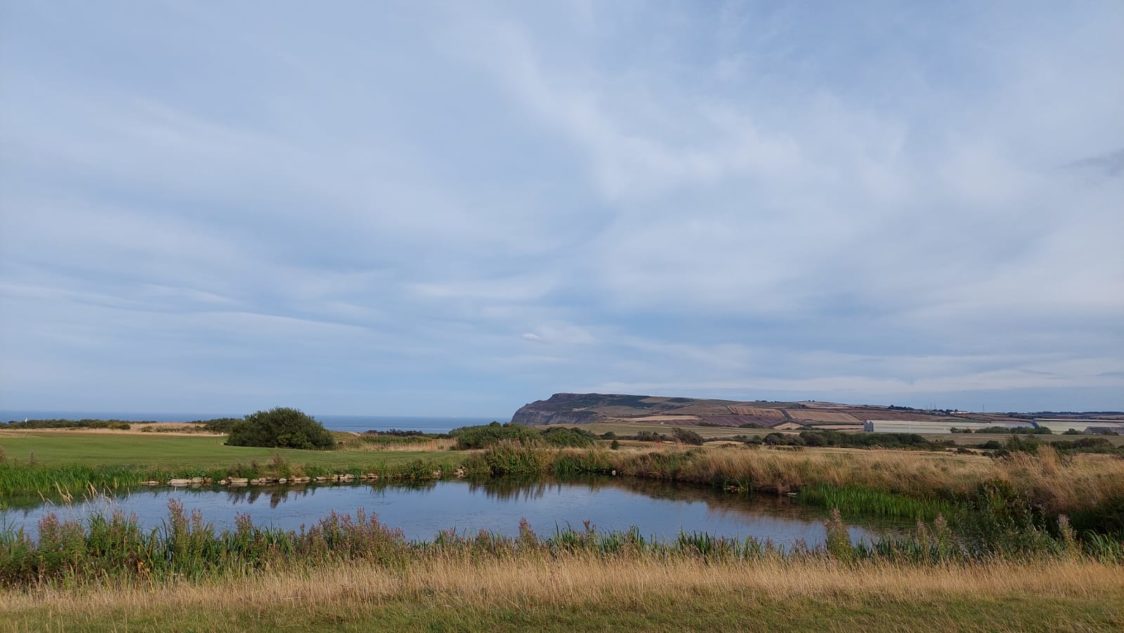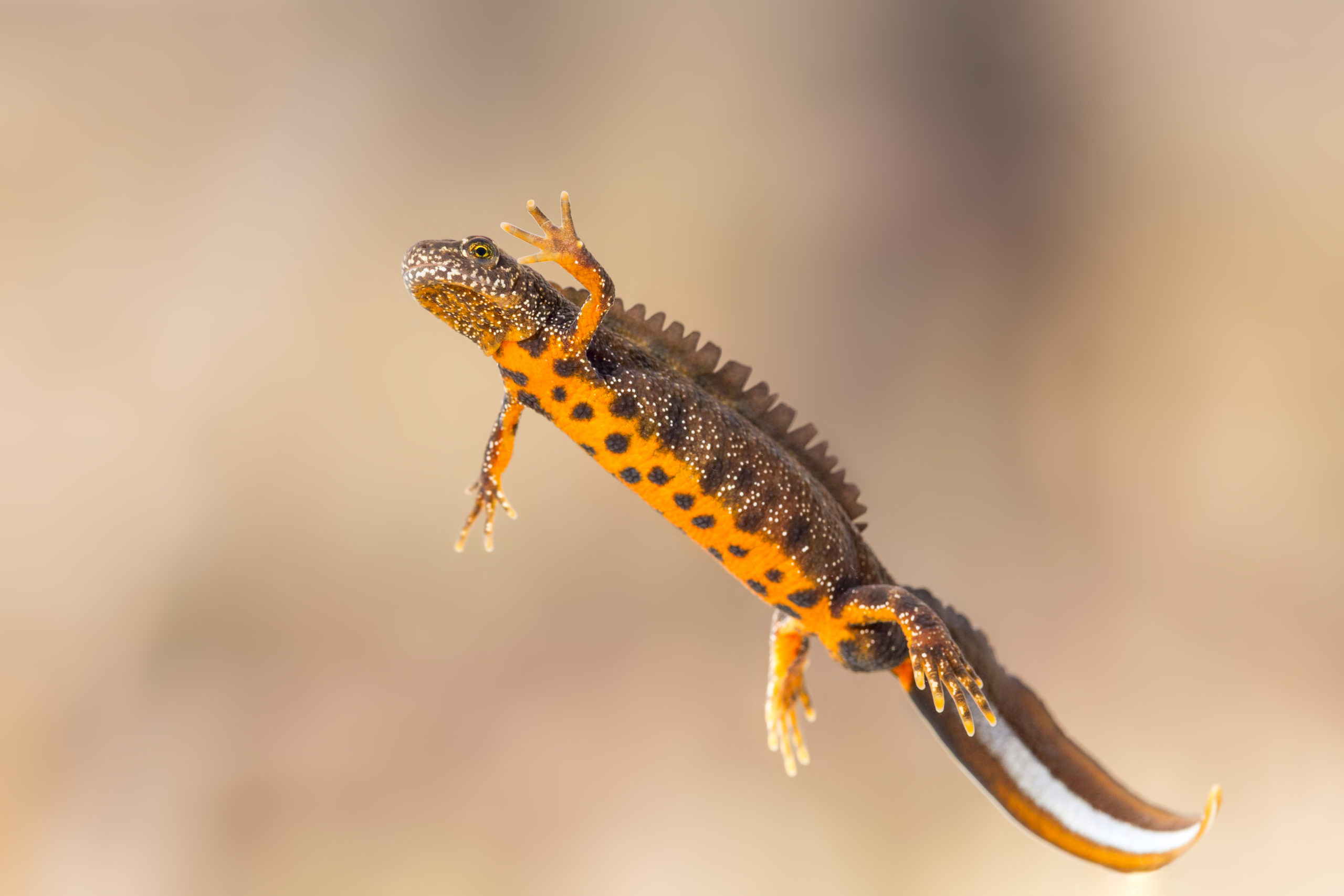
Great Crested Newts – NE District Level Licensing scheme
What are Great Crested Newts?
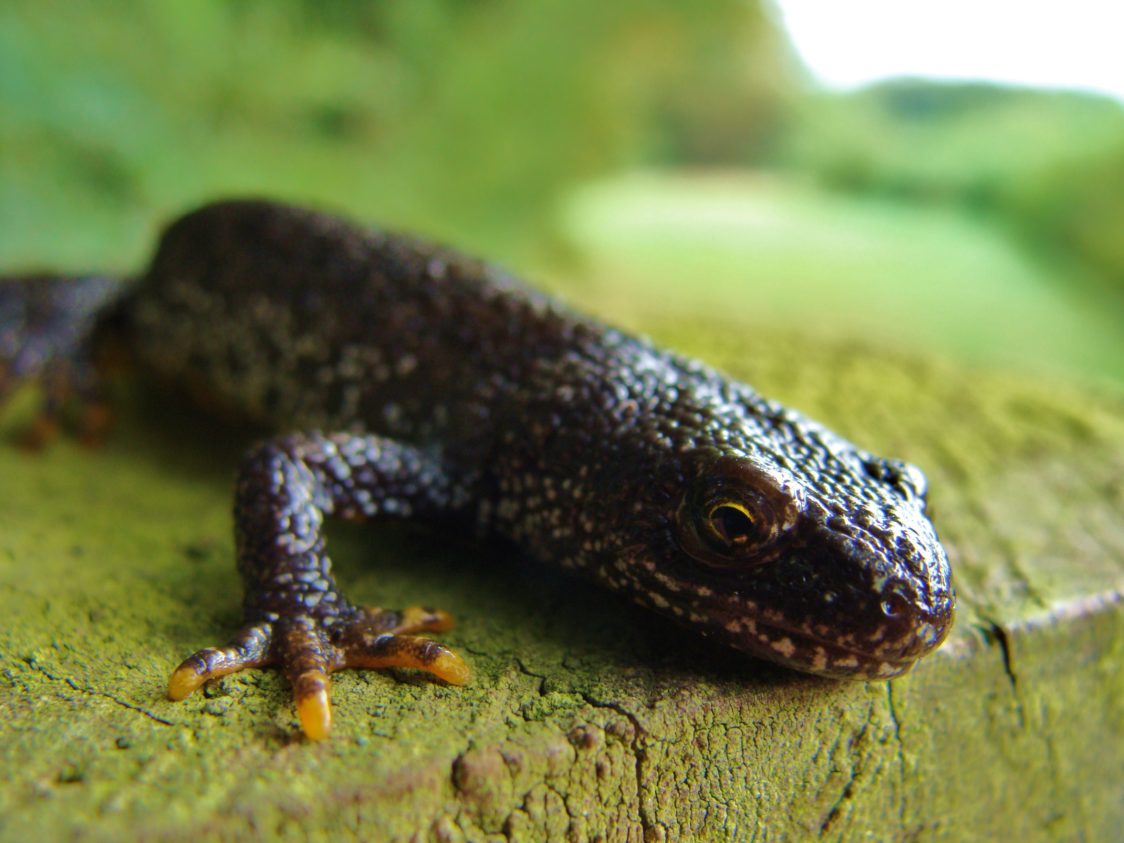
Great crested newts (GCN) are Britain’s largest and rarest native newt species.
GCN have significantly declined in numbers in the last 60 years due to the loss of habitat, particularly the ponds in which they breed.
Tees Valley Wildlife Trust (TVWT) is working with landowners to create and restore this vital habitat across a significant part of our area and help to reverse this population decline.
What is District Level Licensing?
District Level licensing (DLL) aims to increase the number of GCNs by providing new or better habitats (Ponds) in targeted areas to benefit their wider population.
The ponds are being created to compensate for the environmental impacts of development, which will help to strengthen or expand existing GCN populations and create new habitats for other wetland wildlife. It is expected that newts and other wildlife will colonise the ponds naturally.
Below you can see in more detail in Natural England’s video:
How has TVWT implemented DLL in our area?
As of March 2025, TVWT will have delivered as part of this project, the creation or restoration of 54 ponds across North East Yorkshire (Redcar and Cleveland) and Northumbria (Stockton/Hartlepool).
Around 8,100m2 + of wetland habitat has been created as a result, providing vital pathways for newts and other freshwater species to move through the landscape.
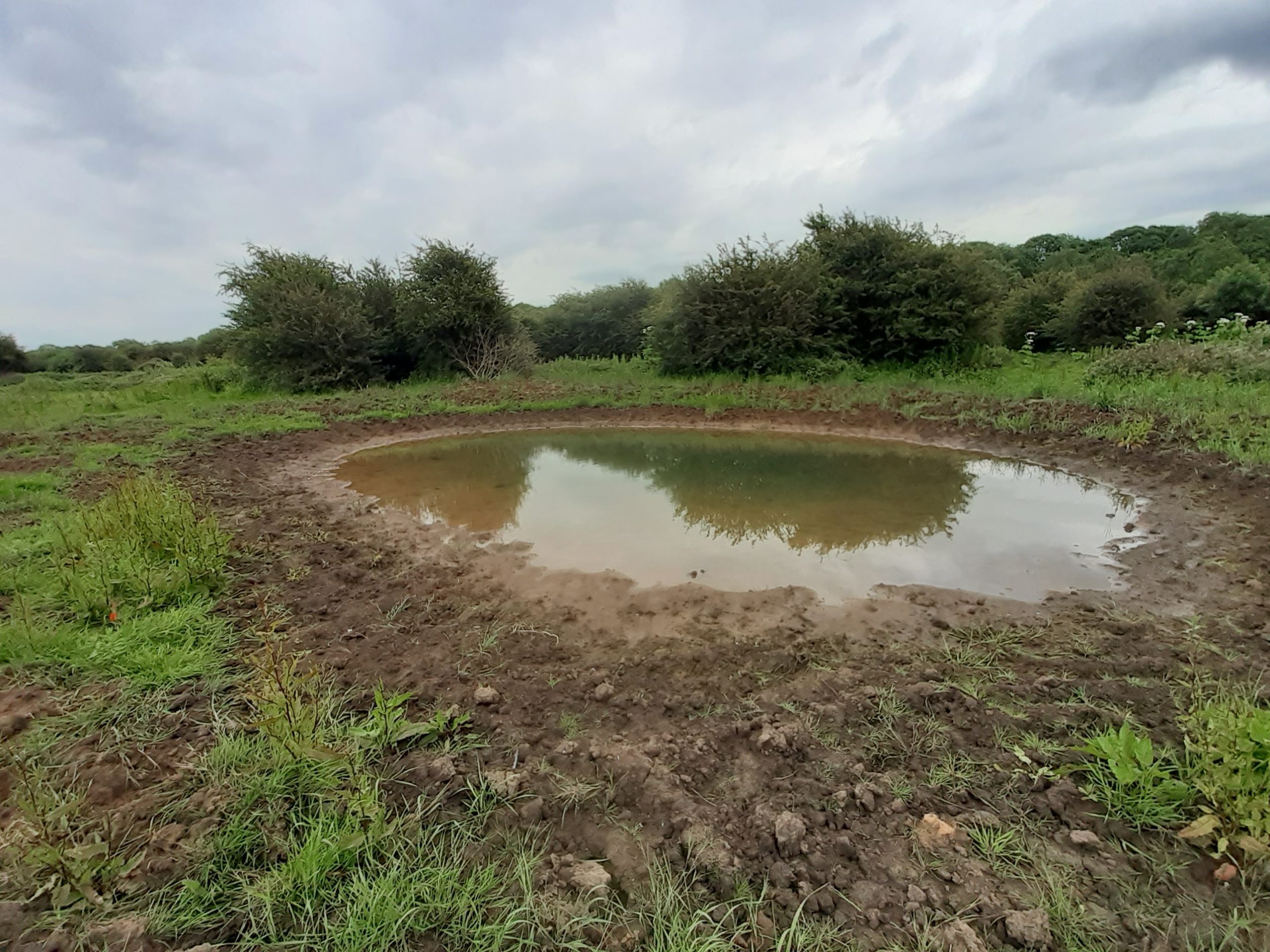
As part of the scheme’s 25-year monitoring programme, TVWT is involved in carrying out surveys. This includes Habitat Suitability Index assessments (HSI) and Environmental DNA (eDNA) surveys for GCN presence/absence.
eDNA is DNA that is released from an organism into the environment (eg from shed skin, faeces, or mucus). Research has shown that DNA from a range of aquatic animals – including newts – can be detected in water samples at very low concentrations, so these surveys are a useful way to tell whether GCN is present within ponds.
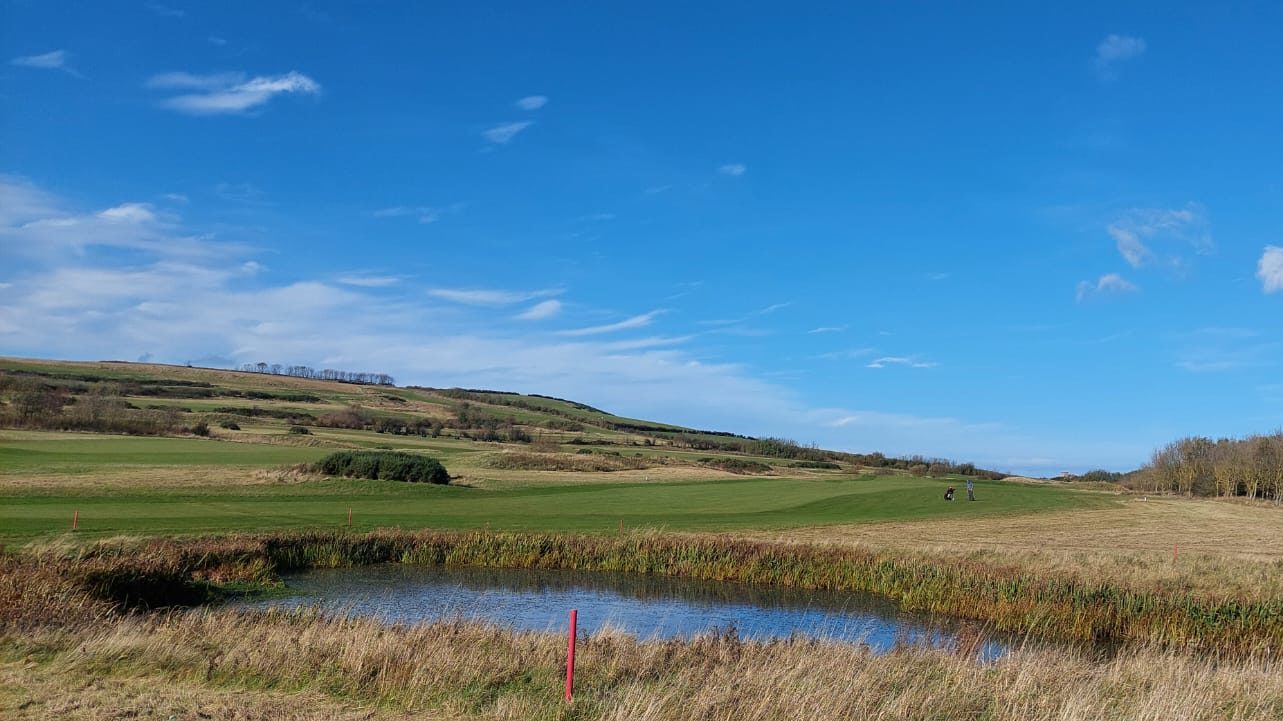
All ponds created as part of this scheme enter the monitoring programme one full year after they are excavated, so the number of ponds being surveyed increases every year.
The results of these eDNA surveys so far have proved promising in the majority of areas where TVWT have created the new habitat. The hope is that newts and other wildlife will colonise the ponds naturally.
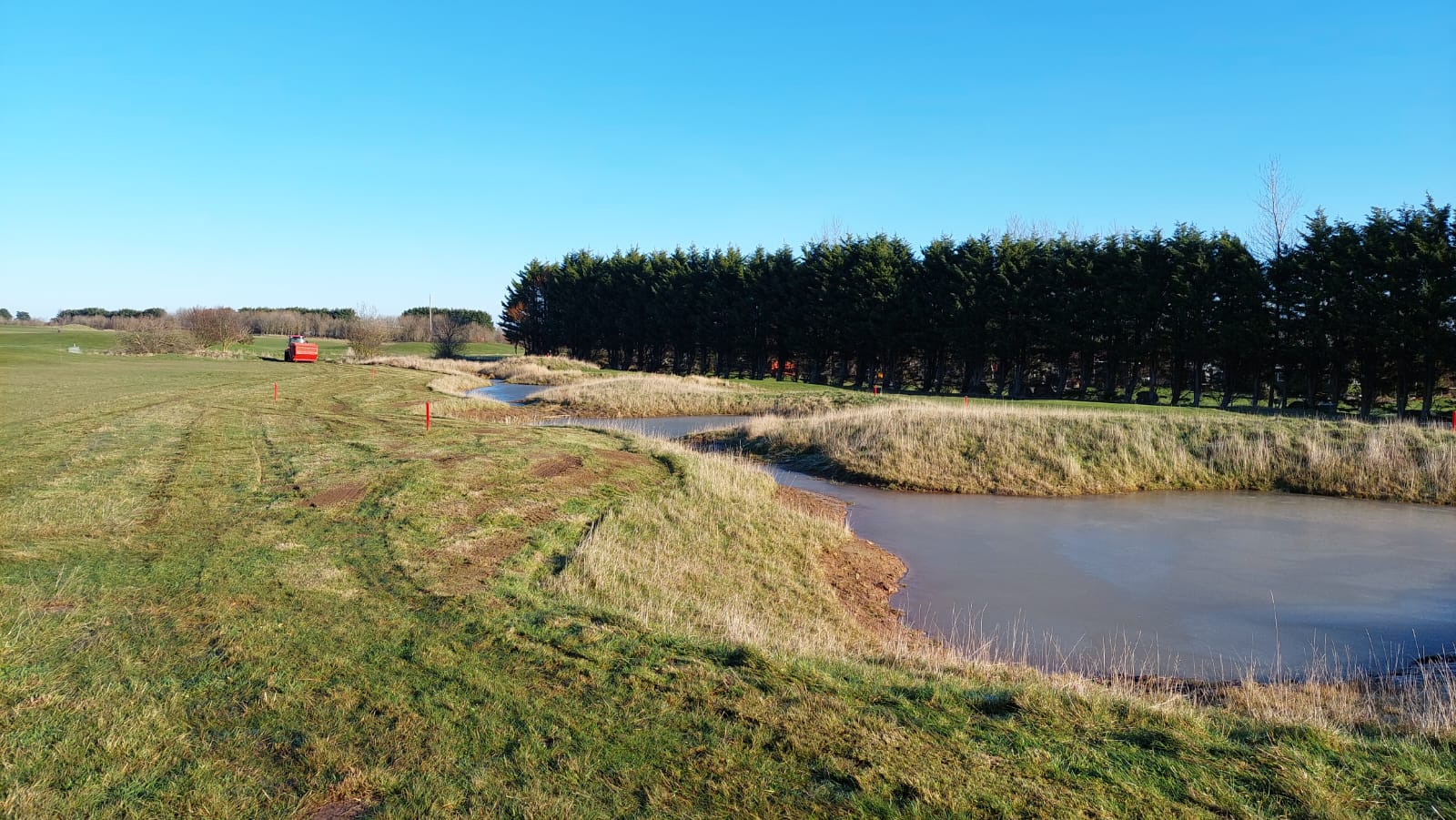
Meet our Habitat Delivery Lead
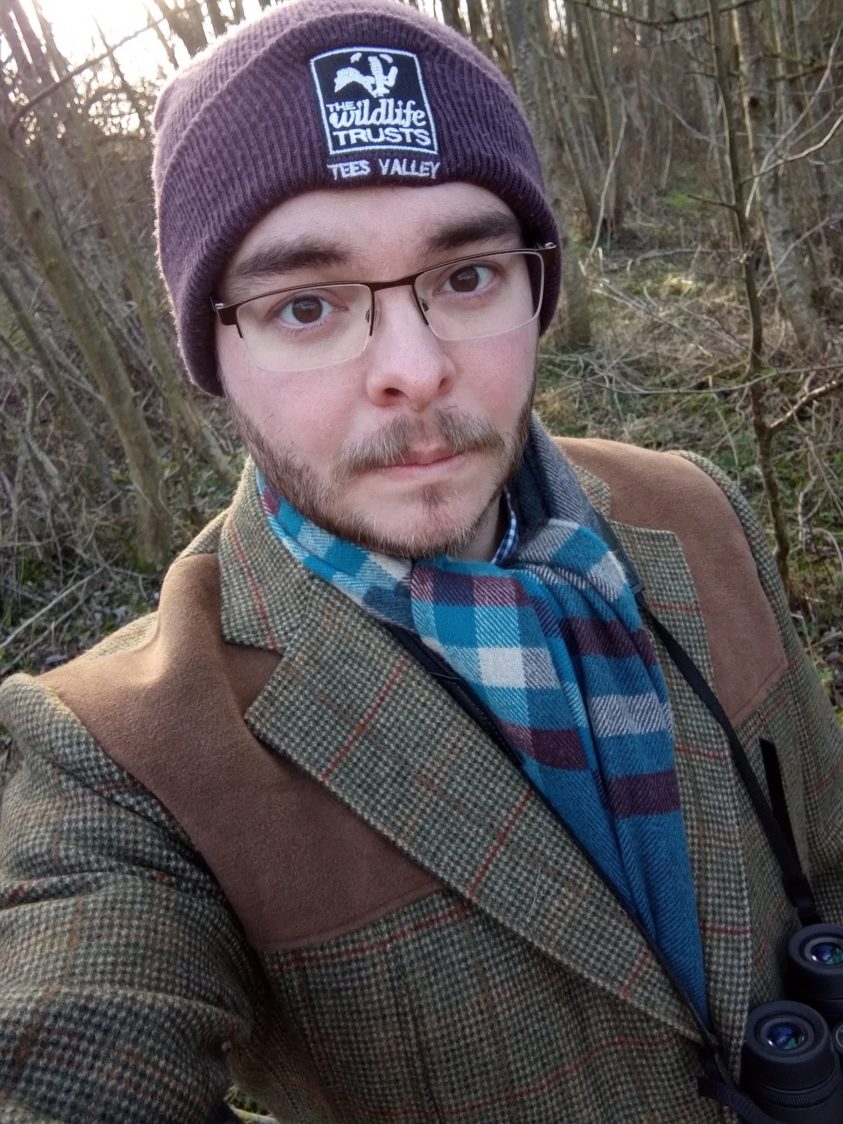
Tom Richardson is our Habitat Delivery Lead for the DLL project. Tom has been with the trust for a couple of years and has been involved with conservation projects surrounding water voles.
Prior he was an ecologist for several years before joining the Trust. His knowledge of protected species is extensive, everything from bats, badgers and GCN, including licensing, surveys and translocation.
“It is a pleasure to work with Natural England and other partners in this project. So far, the project has proved to be significant in restoring/creating new habitat for GCN. A good number of ponds we (TVWT) have created have already been colonised by GCN, which is fantastic to see. I look forward to the next installment of delivery and monitoring this year (2025)”.
How can you help?
The Trust is continually looking for landowners to get involved. The ponds will be fully funded, and TVWT will carry out all the project management and work required – all you need to do is periodic maintenance and allow occasional site visits.
All potential pond sites must lie amongst rough habitats and be within our target areas, so a desk study and site visit will be provided by us to confirm suitability. More information can be found below – please read this if you’re interested in enquiring and expressing your interest.
How to express your interest.
Please email our Habitat delivery lead, Tom Richardson at [email protected] with the following information:
- Your name, contact details and the address of your site.
- A 10-figure grid reference (or What3Words) locating each of the proposed or existing ponds you are interested in getting funded (this is required to check initial eligibility).
- Title your email ‘DLL pond enquiry’.
- Please note we are currently inviting expressions of interest from the following local authority areas: Redcar and Cleveland, Middlesbrough l, Stockton-on-Tees, and Hartlepool Borough Councils.
Suitable enquiries will be followed up by a relatively simple form and a site visit to discuss further and answer any questions. Please note that there is a finite amount of funding available and will be allocated on a first-come, first-served basis to the most appropriate projects.
There is no deadline and this is an ongoing programme. Applications may be submitted at any time throughout the year (please contact us using the details above). Upon receipt of your enquiry, you will be advised of the approximate timescales in which it will be processed.
Additional requirements/details for landowners
We are asking for landowners to consider some of the following if they think their site is suitable and would like to get involved in the scheme:
- The minimum, but optimum, size of each pond is a surface area between 150m2 and 170m2.
- Generally, the maximum depth will be 1m.
- It should be within 500m of another existing pond and located as close as possible to existing, verifiable, GCN records.
- Ground conditions need to be such that the pond will hold water a minimum of one summer in every three (please note that ponds requiring liners are not normally funded).
- The location should be within 50m of suitable terrestrial habitat (taller grasses, scrub, woodland or hedgerows).
- The south side of the pond should not be allowed to be excessively shaded by trees or other vegetation.
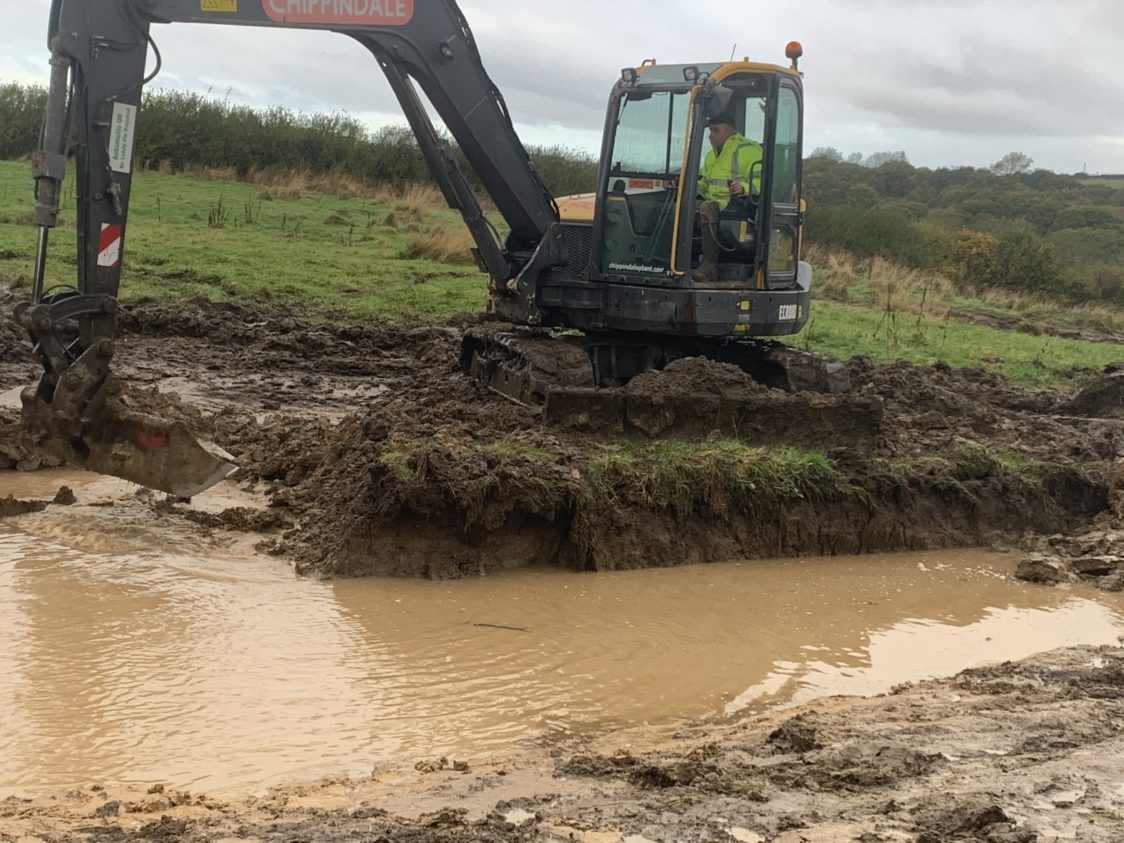
- If in a heavily grazed landscape or where disturbance could occur any ponds would need to be fenced (this will likely require a landowner contribution) by a minimum 3m buffer zone.
- The pond must be in an area not likely to be polluted by runoff.
- The chosen locality should not be liable to flood or be at risk of suffering ingress by fish or excessive use by wildfowl.
- Any area chosen must not be contaminated by invasive non-native species (e.g. Himalayan Balsam or Crassula helmsii).
- Any site must ordinarily sit within one of our Strategic Opportunity Areas (SOAs) – NOTE that TVWT will check this upon receiving the location data you provide.
- Restorations ONLY – all ponds put forward must be in late successional stages (choked with vegetation), devoid of water or covered in a thick layer of anaerobic sediment.
